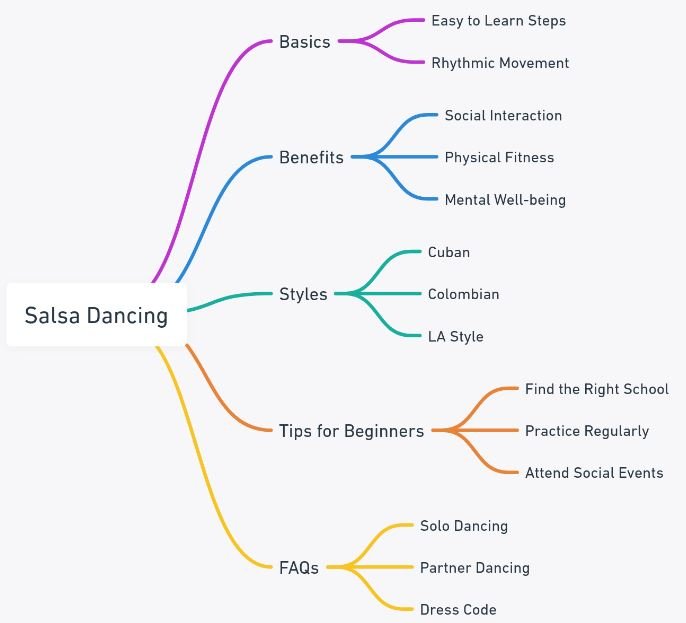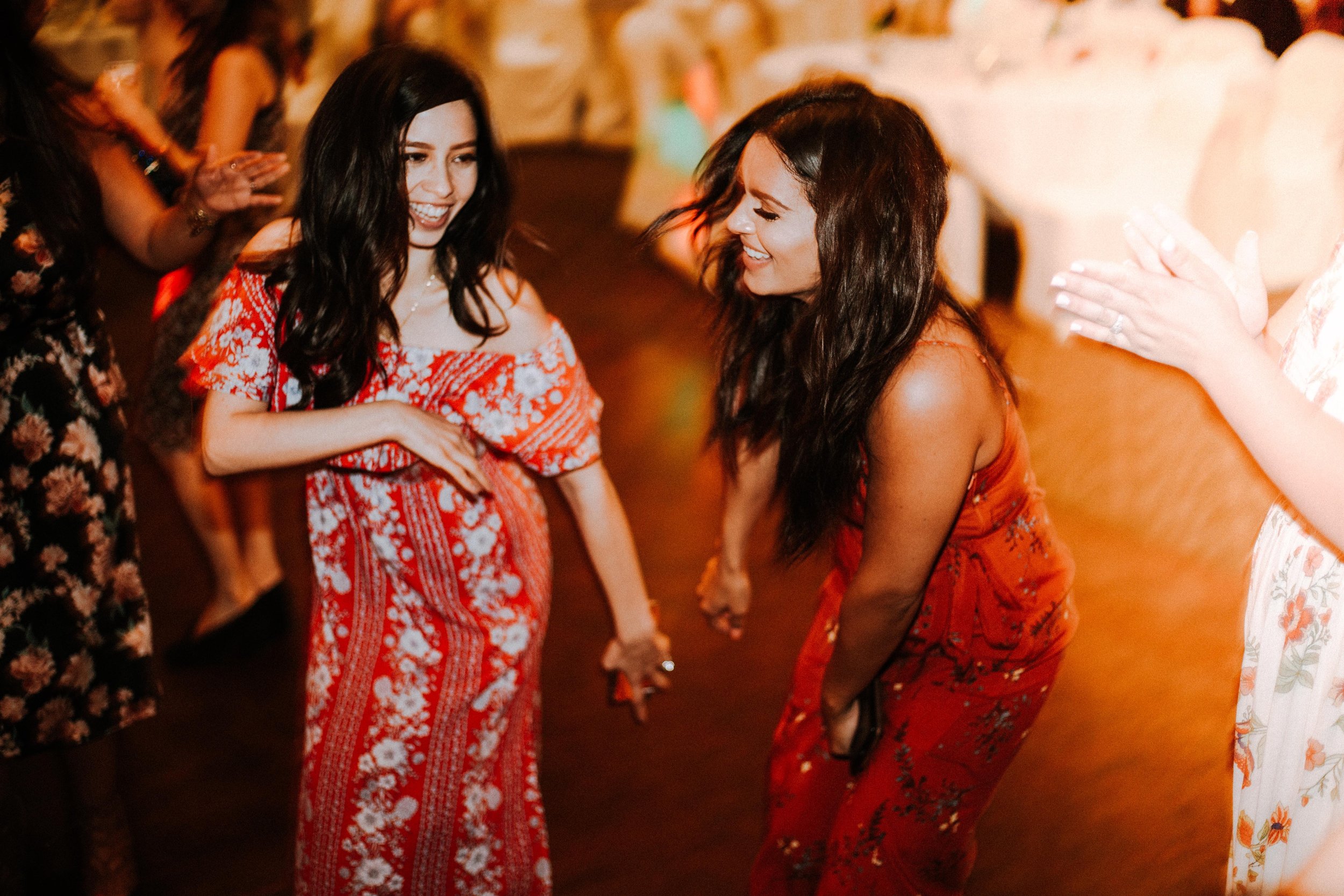Is Salsa A Good Beginner Dance? Beginners Guide
Is Salsa A Good Beginner Dance? Beginners Guide
The vibrant and sensual world of dance offers many styles to explore. One dance form that stands out for its fiery spirit and cultural charm is salsa. But is salsa a good beginner dance? The answer is a resounding yes. The allure of salsa dancing lies in its fundamental simplicity, engaging rhythms, and the rewarding learning journey it offers. Whether based in the heart of Sydney or on the scenic Sunshine Coast, a salsa dance class is waiting to welcome you into Australia's thrilling world of dance.
Salsa Dancing Overview
The Beauty and Basics of Salsa Dance
Photo by Matthew Henry on Unsplash
Salsa is a sensual Latin dance characterized by lively rhythms, dynamic movements, and a strong sense of partnership. Born from the Afro-Cuban rhythms and the enthusiasm of Latin America, this dance form has made its way into the hearts of many people worldwide, Australia being no exception. The basic salsa steps are easy to learn and provide a solid foundation for the beginner dancer. This engaging dance relies heavily on weight shifts, footwork, and syncopated rhythms. When you dance salsa, your body continually moves, resulting in a fun and stimulating experience. It involves stepping forward with the left foot or shifting your weight as you move through the music. Your first few dance classes might focus on these basics, helping you understand the rhythm of the music and getting your footwork right. From this point, the sky is the limit as you can progress into intricate turns, spins, and combinations that make salsa dancing entrancing.
What is the Purpose of Salsa Dancing?
Salsa dancing, like most dance forms, serves multiple purposes. Beyond its artistic and cultural expression, it acts as a social bridge, bringing together people from diverse backgrounds in a shared music and movement experience. For those interested in the deeper social and cultural implications of this dance form, 'Salsa Dancing into the Social Sciences' by Kristin Luker offers valuable insights. Whether you're a couples salsa enthusiast or a solo dancer, camaraderie comes from learning and growing together in a dance class. Salsa also serves a fitness purpose. The lively steps and quick movements provide an excellent cardiovascular workout, and the graceful turns require balance and core strength. And let's remember the mental workout! Salsa requires concentration and memory as you practice remembering sequences and coordinating your movements with the rhythm.
Is Salsa a Good Beginner Dance?
With its welcoming community, an abundance of dance schools, and accessible basics, salsa is an excellent choice for beginner's dance. For those new to dance, salsa provides an ideal starting point. Salsa does not require a specific body type or previous dance experience. What it does require is a willingness to learn and practice. As a beginner dancer, the first few steps might feel challenging, but the movements become second nature with regular practice. The emphasis on footwork rather than complex choreography in beginner salsa also makes it a good choice. Beginners can focus on mastering the basic steps and building a solid foundation to expand their dance repertoire. Plus, there's no need for special shoes or clothing in your first few classes; comfortable attire will do.
Do You Move Your Hips in Salsa?
Photo by Clarisse Meyer on Unsplash
Yes, in salsa, you do move your hips! But it's not the same hip hop gyrations you might consider. In salsa, the hip movement is a natural consequence of the weight shifts that happen with each step you take. As you transfer your weight from one foot to another, your hips move in response, adding a sensual flair to your steps. So if you're a hip-hop fan looking to try something new, you'll find the hip movements in salsa dancing a refreshing yet familiar challenge. The hip motion is an integral part of the dance but remember, the salsa is also about the upper body and arm movements, creating a holistic dance experience.
Music and Salsa Dance
The music plays a critical role in salsa dancing. It sets the mood, dictates the rhythm, and guides your steps. One of the initial challenges beginner salsa dancers often face is finding and keeping time with the music. In salsa, the music is typically structured in counts of eight, with dancers pausing slightly on the fourth and eighth counts. This rhythm is fundamental to salsa and something you'll likely work on in your beginner dance classes. As you grow more confident, you'll start to feel and interpret the music through your movements, adding your unique flair to your salsa dancing.
Tips for Beginner Salsa Dancers
Find the Right Dance School: Look for a dance school with experienced instructors skilled in teaching beginners. An excellent beginner's class will provide a supportive environment, focus on the basics, and give you ample time to practice.
Don't Rush the Learning Process: Learning to dance salsa is a journey, not a race. Learning the steps, feeling the music, and developing your style takes time. Be patient and enjoy each step of your salsa journey.
Practice Regularly: Regular practice is key to mastering salsa. Practice not only helps reinforce what you learn in class, but it also helps build muscle memory. Even a few minutes of practice daily can make a significant difference.
Attend Social Dance Events: Consider attending salsa socials once you're comfortable with the basics. These events offer a great opportunity to practice what you've learned in class, meet other dancers, and enjoy salsa in a social setting.
For a step-by-step visual guide, watch this beginner's salsa dance tutorial on YouTube, which can help you understand the basics before you step into a class.
Conclusion
Photo by Omar Lopez on Unsplash
If you're seeking a dance style that's engaging, accessible, and brimming with cultural charm, salsa is an excellent choice. It's a dance that welcomes beginners with open arms and offers a rewarding journey beyond the steps and the music. So wear your dancing shoes, enter a salsa class, and embark on your salsa adventure today. Australia's salsa community awaits you with open arms and swaying hips. Remember, the beauty of dance lies not in perfect steps but in the joy of movement, the connections you make, and the way the music makes you feel. Happy salsa dancing!
Frequently Asked Questions
Can salsa be done solo?
Indeed, salsa can be performed solo. This type of dance, often called "solo salsa" or "salsa suelta," emphasizes body movement and individual technique. Solo salsa allows dancers to focus on footwork, body isolations, and musicality without coordinating with a partner. As a beginner, dancing salsa solo can be a good way to build skills and confidence. For instance, some dance schools in Melbourne offer classes focusing solely on solo salsa techniques.
Is salsa dancing always with a partner?
While salsa is often associated with partner work, it isn't always danced with a partner. As mentioned, solo salsa is popular, particularly for training and practice purposes. In a beginner's class, you might start by learning the steps alone and then progressively incorporate partner work. Understanding how to step forward, step backward, and move to the rhythm of the music individually can help enhance your dancing skills when you partner up.
What gender roles are in salsa?
Traditionally, salsa has been danced in male-female pairs, with the male leading and the female following. However, the salsa scene is evolving, and these gender roles are becoming less rigid. It's now common to see same-sex partners or women leading in salsa classes or social dances. The best approach is to focus on the skills each role demands - leading is about clear communication and anticipating movements while following requires attentiveness and adaptability.
Who usually dances salsa?
Salsa is a dance for everyone, transcending age, gender, and cultural backgrounds. The joy of dancing salsa is its inclusivity. Anyone can embrace the salsa dance floor, from teenagers to retirees, beginners to professionals. In cities like Melbourne, you'll find a diverse group of people in salsa classes, all connected by their love for this vibrant dance form.
What should a beginner wear for salsa?
As a beginner, comfort should be your top priority when dressing for salsa. Light, breathable clothing that allows for easy movement is ideal. In terms of shoes, choose a smooth sole that enables you to step forward and backward without sticking to the floor. You might invest in professional dance shoes for better performance as you progress. Remember, every salsa class is also a social event, so feel free to express your personality in your attire! Tips like these can make your salsa journey a truly enjoyable experience.
Am I Too Old to Learn Salsa?
Salsa dancing is timeless and ageless, welcoming enthusiasts from all walks of life. The beauty of salsa lies in its ability to adapt to individual capabilities, making it accessible to people of all ages. Whether you're in your 20s or your 60s, salsa offers a vibrant community and a fun, engaging way to stay active. This section would delve into inspiring stories of individuals who started salsa later in life, tips for beginners of any age, and how salsa can be a wonderful way to maintain physical and mental agility.
Can You Learn Salsa by Yourself?
While salsa is traditionally a partner dance, it's entirely possible to start your salsa journey solo. This section would explore the concept of "salsa suelta," which focuses on solo dancing, allowing individuals to work on their footwork, timing, and body movements without the need for a partner. It would offer resources for self-learners, including online tutorials, practice tips, and how to make the most of solo practice sessions. Additionally, it would highlight the benefits of eventually joining a class or group to enhance learning through social interaction and feedback.
How Often Should You Practice Salsa?
Consistent practice is key to mastering salsa, but finding the right balance is crucial to avoid burnout and ensure steady progress. This section would provide guidelines on setting up a practice routine that fits into your lifestyle, the importance of quality over quantity in practice sessions, and how to stay motivated. It would also discuss the role of social dancing as a form of practice and how engaging with the salsa community can accelerate learning and make practice an enjoyable part of your routine.




